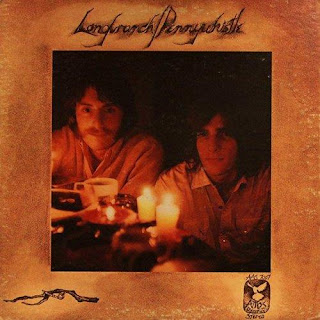domingo, 14 de março de 2021
Caravan - Caravan 1968
Marc Benno - Lost In Austin 1979
Stealers Wheel - Ferguslie Park 1974
Jimmy Hughes - Steal Away - The Early Fame Recordings 1964
listen here
Longbranch Pennywhistle - Longbranch Pennywhistle 1969
listen here
Creedence Clearwater Revival - Bayou Country 1969
listen here
East Of Eden - Mercator Projected 1969
Dan Ar Bras - Douar Nevez 1977
One of the most melodic guitarists in Celtic music, Dan Ar Bras has recorded as a soloist and with innovative Celtic harp, bagpipe and flute player Alan Stivell. A pioneer of electric folk in the early 1970s, Ar Bras has continued to explore the textural possibilities of electric and acoustic guitar. Ar Bras hooked up with Stivell in 1967, shortly after moving to Brittany, a region in western France. He remained an essential element of Stivell's sound for more than a decade and made important contributions to nine of Stivell's albums, including the influential Renaissance of the Celtic Harp in 1972, and the reunion album Again in 1994. After Stivell broke up the band in 1976, Ar Bras spent six months as a member of Fairport Convention, leaving before recording with the group. Although he assembled his own tradition-rooted band, they were equally skilled at electric music and recorded a rock version of Lennon and McCartney's "Rain." Ar Bras switched to a Celtic style of playing acoustic guitar in the mid-1980s and recorded a heavily atmospheric album, Music for Silences to Come, in 1985. In the 1990s, Ar Bras assembled a 50-piece band, L'Heritage Des Celtes. A self-titled studio album was released in 1994 with a live recording, En Concert, following a year later.
Ar Bras continues to be involved with Fairport Convention, recording in Dave Pegg's Woodworm studios near Banbury, Oxfordshire and performing regularly at Fairport's annual festival in Cropedy. AMG.
listen here








